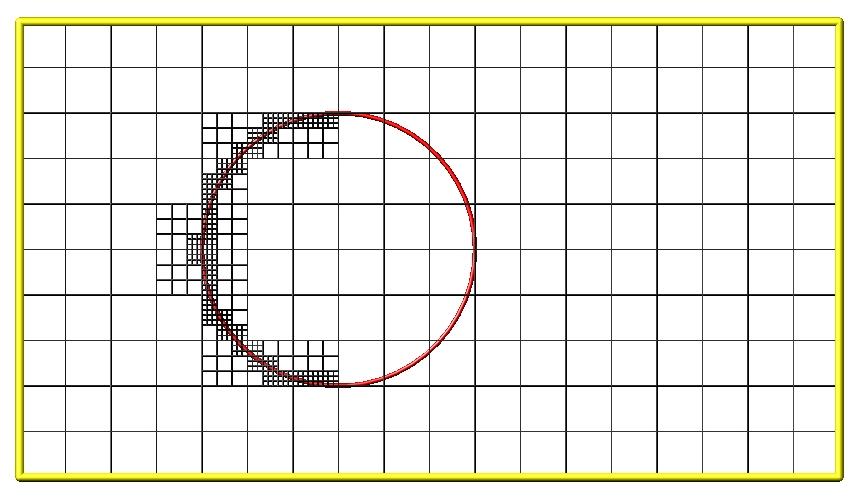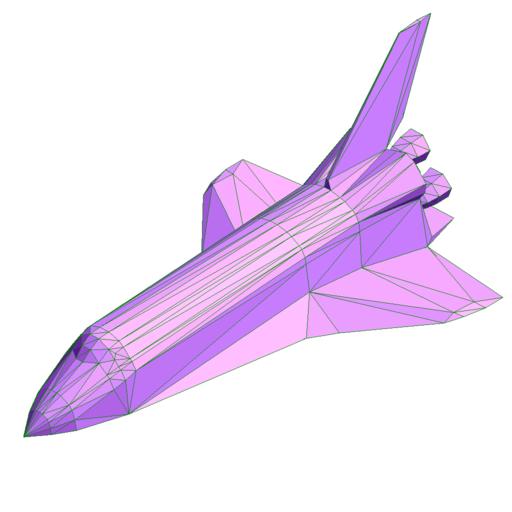
These sections provide an overview of what SPARTA can do, describe what it means for SPARTA to be an open-source code, and acknowledge the funding and people who have contributed to SPARTA.
1.1 What is SPARTASPARTA is a Direct Simulation Montel Carlo code that models rarefied gases, using collision, chemistry, and boundary condition models. It uses a hierarchical Cartesian grid to track and group particles for 3d or 2d or axisymmetric models. Objects emedded in the gas are represented as triangulated surfaces and cut through grid cells.
For examples of SPARTA simulations, see the SPARTA WWW Site.
SPARTA runs efficiently on single-processor desktop or laptop machines, but is designed for parallel computers. It will run on any parallel machine that compiles C++ and supports the MPI message-passing library. This includes distributed- or shared-memory parallel machines as well as commodity clusters.
SPARTA can model systems with only a few particles up to millions or billions. See Section 8 for information on SPARTA performance and scalability, or the Benchmarks section of the SPARTA WWW Site.
SPARTA is a freely-available open-source code, distributed under the terms of the GNU Public License, or sometimes by request under the terms of the GNU Lesser General Public License (LGPL), which means you can use or modify the code however you wish. The only restrictions imposed by the GPL or LGPL are on how you distribute the code further. See Section 1.4 below for a brief discussion of the open-source philosophy.
SPARTA is designed to be easy to modify or extend with new capabilities, such as new collision or chemistry models, boundary conditions, or diagnostics. See Section 10 for more details.
SPARTA is written in C++ which is used at a hi-level to structure the code and its options in an object-oriented fashion. The kernel computations use simple data structures and C-like code for effciency. So SPARTA is really written in an object-oriented C style.
SPARTA was developed with internal funding at Sandia National Laboratories, a US Department of Energy lab. See Section 1.5 below for more information on SPARTA funding and individuals who have contributed to SPARTA.
This section highlights SPARTA features, with links to specific commands which give more details. The next section illustrates the kinds of grid geometries and surface definitions which SPARTA supports.
If SPARTA doesn't have your favorite collision model, boundary condition, or diagnostic, see Section 10 of the manual, which describes how it can be added to SPARTA.
SPARTA overlays a grid over the simulation domain which is used to track particles and to co-locate particles in the same grid cell for performing collision and chemistry operations. SPARTA uses a Cartesian hierarchical grid. Cartesian means that the faces of a grid cell are aligned with the Cartesian xyz axes. Hierarchical means that individual grid cells can be sub-divided into smaller cells, recursively. This allows for flexible grid cell refinement in any region of the simulation domain. E.g. around a surface, or in a high-density region of the gas flow.
An example 2d hierarchical grid is shown in the diagram, for a circular surface object (in red) with the grid refined on the upwind side of the object (flow from left to right).

Objects represented with a surface triangulation (line segments in 2d) can also be read in to define objects which particles flow around. Individual surface elements are assigned to grid cells they intersect with, so that particle/surface collisions can be efficiently computed.
As an example, here is coarsely triangulated representation of the space shuttle (only 616 triangles!), which could be embedded in a simulation box. Click on the image for a larger picture.

See Sections 4.9 and 4.10 for more details of both the grids and surface objects that SPARTA supports and how to define them.
SPARTA comes with no warranty of any kind. As each source file states in its header, it is a copyrighted code that is distributed free-of- charge, under the terms of the GNU Public License (GPL). This is often referred to as open-source distribution - see www.gnu.org or www.opensource.org for more details. The legal text of the GPL is in the LICENSE file that is included in the SPARTA distribution.
Here is a summary of what the GPL means for SPARTA users:
(1) Anyone is free to use, modify, or extend SPARTA in any way they choose, including for commercial purposes.
(2) If you distribute a modified version of SPARTA, it must remain open-source, meaning you distribute it under the terms of the GPL. You should clearly annotate such a code as a derivative version of SPARTA.
(3) If you release any code that includes SPARTA source code, then it must also be open-sourced, meaning you distribute it under the terms of the GPL.
(4) If you give SPARTA files to someone else, the GPL LICENSE file and source file headers (including the copyright and GPL notices) should remain part of the code.
In the spirit of an open-source code, these are various ways you can contribute to making SPARTA better. You can send email to the developers on any of these topics.
SPARTA development has been funded by the US Department of Energy (DOE).
If you use SPARTA results in your published work, please cite the paper(s) listed under the Citing SPARTA link of the SPARTA WWW page, and include a pointer to the SPARTA WWW Site (https://sparta.github.io):
The Publications link on the SPARTA WWW page lists papers that have cited SPARTA. If your paper is not listed there, feel free to send us the info. If the simulations in your paper produced cool pictures or animations, we'll be pleased to add them to the Pictures or Movies pages of the SPARTA WWW site.
The core group of SPARTA developers is at Sandia National Labs: